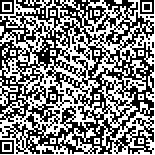本文已被:浏览 1006次 下载 746次
投稿时间:2019-10-13 网络发布日期:2020-07-20
投稿时间:2019-10-13 网络发布日期:2020-07-20
中文摘要: 目的 通过1例患者的临床实践并复习文献,阐述多支冠状动弥漫性痉挛导致心源性休克的诊断要点、治疗手段及可能机制。
方法 回顾性分析1例4年前有冠状动脉左前降支和第一对角支支架置入史患者,突发持续性胸骨后胸痛30 min,于2018-05-31急诊收治,发生室颤、心源性休克患者的临床资料。
结果 经抗休克药物、电除颤、急诊冠状动脉造影(CAG)、冠状动脉内推注抗痉挛药物、主动脉球囊反搏等措施,成功抢救,1周后病情稳定。既往史及本次CAG及血管内超声对比提示,患者从单支的右冠状动脉、左前降支痉挛进展到多支冠脉弥漫性痉挛,引发室颤、心源性休克。
结论 多支冠脉弥漫性痉挛是心源性休克不常见的原因。
Abstract:Objective To describe the diagnosis,treatment and possible mechanism of cardiac shock caused by diffuse multi-vessel coronary artery spasm.
Methods A retrospective analysis was made on the clinical data of one patient with a sudden onset and persistent retrosternal chest pain for 30 minutes,leading to ventricular fibrillation and cardiogenic shock on May 31,2018,who underwent left anterior descending coronary artery and the first diagonal branch stent implantation 4 years ago.
Results The patient was successfully rescued by antishock drugs,defibrillation,emergency coronary angiography (CAG),intracoronary injection of antispasmodic drugs,intra-aortic balloon counterpulsation and was in stable condition one week later.
The previous history and the comparison of CAG and intravascular ultrasound showed that the sudden ventricular fibrillation and cardiogenic shock were caused by the progression of spasm of single right coronary artery and left anterior descending branch to diffuse spasm of multiple coronary arteries.
Conclusion Diffuse multi-vessel coronary artery spasm is an uncommon cause of cardiogenic shock.
keywords: Multi-vessel coronary artery spasm Ventricular fibrillation Cardiogenic shock Intra-aortic balloon counterpulsation
文章编号: 中图分类号: 文献标志码:B
基金项目:2018年度中石化公司临床医学专项科研项目(ZX18001);南京江北人民医院院级科研项目(JKK201705)
附件
| Author Name | Affiliation |
| ZHANG Xiao-bing,YING Ke-jing,XIA Si-liang | Chest Pain Centre,Affiliated Jiangbei People′s Hospital of Nantong University,Nanjing,Jiangsu 210048,China |
引用文本:
张小兵,尹克金,夏思良.多支冠状动脉弥漫性痉挛致室颤、心源性休克1例并文献复习[J].中国临床研究,2020,33(7):996-9,981,002.
张小兵,尹克金,夏思良.多支冠状动脉弥漫性痉挛致室颤、心源性休克1例并文献复习[J].中国临床研究,2020,33(7):996-9,981,002.
